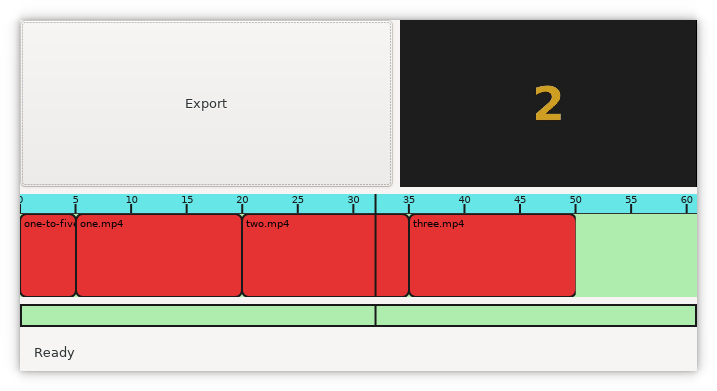How to get fast feedback on graphical code?
Published on 28 July 2023.
I am working on my own video editor. It currently looks like this:

The bottom pane shows the timeline with all the clips. It is a Gtk.DrawingArea where all the drawing is done using Cairo.
When I work on the drawing code, I want fast feedback on it. Does it look good? Does it draw as intended?
Usually I use TDD for this kind of feedback, but graphical output it hard to test.
In the beginning, I used to run the application after every change. This was quite fast because the application is still small and I can start it up with a sample timeline quite quickly. However, it still takes a few seconds and a couple of keystrokes.
Then I came up with a much better workflow.
I added a (doc)test to my test suite that does something like this (some details removed):
"""
>>> surface = cairo.ImageSurface(cairo.FORMAT_ARGB32, width, height)
>>> context = cairo.Context(surface)
>>> project = Project.new()
>>> with project.new_transaction() as transaction:
... _ = transaction.add_text_clip("hello", length=30)
... x = transaction.add_text_clip("world", length=35)
... _ = transaction.add_text_clip("end", length=20)
... _ = transaction.add_text_clip("end", length=20)
... transaction.modify(x, lambda cut: cut.move(-10))
>>> timeline = Timeline(project)
>>> timeline.draw_cairo(
... context=context,
... playhead_position=40,
... width=width,
... height=height
... )
>>> surface.write_to_png("timeline.png")
"""
The Timeline class is what does the drawing of the timeline. Fortunately, it is separated from the GTK component onto which it is drawn. This allows us to create our own Cairo surface, let the timeline draw itself on that, and in the end, write that surface to a file.
Every time we run the test suite (which I like to do automatically on every save) we get a new timeline.png file where the example clips that we populated in the test are drawn. If we open this file in the GNOME image viewer (eog timeline.png) it will automatically reload the image when it changes.
In this workflow, this is my typical setup:

I have my editor to the right, the automatic test suite runner in the top left, and the timeline image in the bottom left.
In this example I draw two timelines with different zoom levels so that I can quickly see how that looks.
Then I can make a change to some color for example, and within a second or two, my test suite has automatically run and my desktop looks like this:

I can tweak numbers until I think it looks good and I never have to leave my editor.
Site proudly generated by Hakyll.